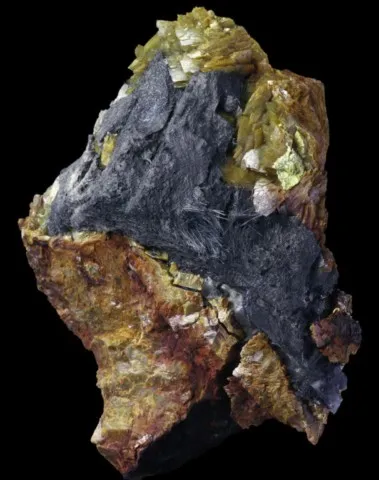DADSONITE
Class : Sulfides and sulfosalts
Subclass : Sulfosalts
Crystal system : Triclinic
Chemistry : Pb23Sb25S60Cl
Rarity : Rare
Dadsonite is a rare sulfosalt of lead and antimony. It forms in hydrothermal veins where it associates with other lead sulfides and sulphosalts (jamesonite, bournonite, boulangerite, chalcostibite, zinkenite, etc...). It was named in honor of the geologist and mineralogist Alexander Stewart Dadson who made important contributions to the mining development of the Yellowknife gold mine (Canada). Dadsonite is opaque and only develops small fibrous or acicular crystals measuring a few millimeters long streaked parallel to the elongation. These crystals are mainly grouped in aggregates resembling "steel wool" with a lead gray color and a metallic luster.
Main photo : Dadsonite from St-Pons, Barcelonnette, Alpes-de-Haute-Provence, France
Dadsonite in the World
Twinning
Many twins are known but not visible to the naked eye.
Fakes and treatments
No fakes listed for this mineral species.
Hardness : 2.5
Density : 5.68
Fracture : Undetermined
Streak : Black
TP : Opaque
RI : -
Birefringence : -
Optical character : -
Pleochroism : None
Fluorescence : None
Solubility : -
Magnetism : NoneRadioactivity : None

